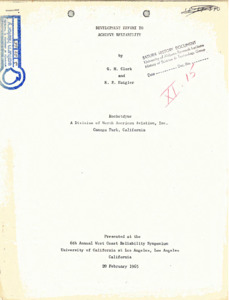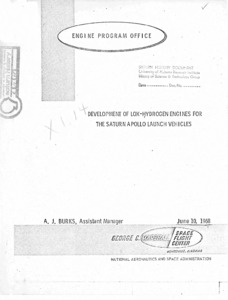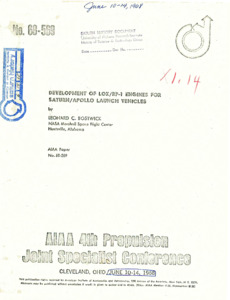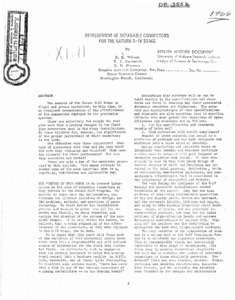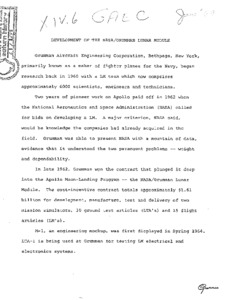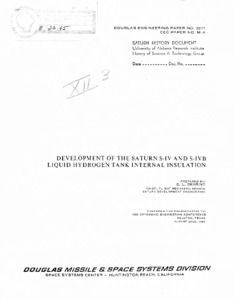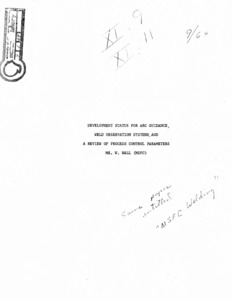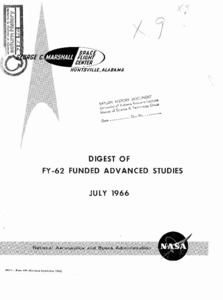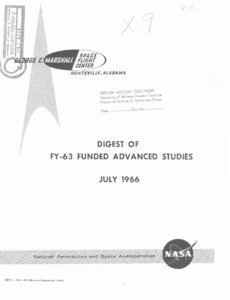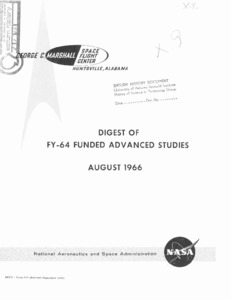
Browse Items (1976 total)
Sort by:
-
"Development Effort to Achieve Reliability."
Presented at the 6th West Coast Reliability Symposium, University of California at Los Angeles, Los Angeles, California, 20 February 1965.The development of a large liquid rocket engine can represent the expenditure of several hundred million dollars of effort. Before 30 percent of the contracted development funds have been expended, however, the engine will probably have operated for the mission duration. The capability to operate at least one successful test early in a development program is evidence of achieving a minimal reliability level, but the major objective of the development program is producing a design which performs reliably. A rocket engine reliability prediction must view reliability as a dynamic concept, constantly being altered by development effort. -
"Development of LOX-Hydrogen Engines for the Saturn Apollo Launch Vehicles."
During the development of the RL-10 and J-2 engines, many problems were encountered. Solutions to the significant problems are contained. A description of these LOX-Hydrogen engines, outlining the unique features of each will be given. Performance parameters for both engine systems are tabulated. Specific applications to various stages are shown. -
"Development of LOX/RP-1 Engines for Saturn/Apollo Launch Vehicles."
The development of liquid rocket engines follow similar patterns regardless of engine size. During the development of the H-1 and F-1 engines, many problems were encountered. Methods of solving the combustion instability problem are discussed. A description is given of the major components of each engine, outlining their unique features. The requirements for an insulation cocoon are discussed. Problems associated with materials substitution are provided; also highlighted is the fact that problems occur after engine deliveries and require continued development support. Safety features incorporated on the engines are mentioned. Solution to problems encountered in flight are discussed. Upratings of both engines systems are presented graphically.; On the NASA Technical Reports Server (NTRS) unclassified. Can also be found on AIAA. -
"Development of Separable Connectors for the Saturn S-IV Stage."
The purpose of this paper is to present information, in the area of separable connectors as they pertain to the Saturn S-IV Program. -
"Development of the NASA/Grumman Lunar Module."
Paper regarding the actions and achievement of the Grumman Aerospace Corporation. -
"Development of the Saturn S-IV and S-IVB Liquid Hydrogen Tank Internal Insulation."
In April of 1960 the Douglas Aircraft Company was awarded a contract to develop the second and uppermost stage for the Saturn I space booster. In order to realize the high specific impulse available, this stage, called the S-IV, was to utilize liquid hydrogen and liquid oxygen as the propellants. After burn-out of the first stage, the S-IV Stage was to ignite its engines at an altitude of approximately 200,000 feet, burn for approximately 8 minutes, and inject a 20,000 lb spacecraft into a low earth orbit. This program represented Douglas's first major endeavor with liquid hydrogen. It was necessary to develop an insulation for the S-IV Stage that was capable of withstanding the thermal shock associated with loading, could provide adequate insulative properties to limit the flow of heat into the hydrogen, and was of minimum weight. This latter fact cannot be over emphasized because every extra pound of insulation is one less pound of available payload weight. -
"Development Status for Arc Guidance, Weld Observation Systems, and a Review of Process Control Parameters."
Letter to David L. Christiensen from W. A. Wall, enclosing requested documents. -
"Digest of FY-62 Funded Advanced Studies : July 1966."
This publication is one of a planned series to summarize the MSFC advanced study program for each fiscal year beginning with FY-61. A separate report will cover the study program for each fiscal year. The purpose of these documents is to provide historical reference information which should be helpful in planning future study programs. The FY-62 funded studies are covered in this document. These investigations are covered under two major categories: Launch Vehicle Studies; and Lunar, Orbital, and Planetary Studies. The information presented on each study includes a brief description of the objectives and results and pertinent contract data. In order to keep this report small and easy to use, no attempt was made to include conclusions based on the study results ; however,the final reports documenting the investigations are referenced. If these reports are needed for permanent retention and are not available from the MSFC Library (MS-IPL), submit requests for the documents to the Scientific and Technical Information Facility, Attention: NASA Representative, P.0. Box 33, College Park, Maryland 20740. -
"Digest of FY-63 funded advanced studies : July 1966."
This publication is, one of a planned series to summarize the advanced study program for each fiscal year beginning with FY-61. A separate report will cover the study program for each fiscal year. The purpose of these documents is to provide historical reference information which should be helpful in planning future study programs. The FY-63 funded studies are covered in this document. These investigations are covered under three categories: Launch Vehicle and Supporting Studies; Orbital and Lunar Studies; and Planetary Studies. The information presented on each study includes a brief description of the objective and results and pertinent contract data. In order to keep this report small and easy to use, no attempt was made to include conclusions based on the study results; however, the final reports documenting the investigations are referenced. If these reports are needed for permanent retention and are not available from the Technical Supervisor or the MSFC Library (MS-IPL), submit requests for the documents to the Scientific and Technical Information Facility, Attention: NASA Representative, P. O. Box 33, College Park, Maryland 20740. -
"Digest of FY-64 Funded Advanced Studies: August 1966."
This paper outlines the major advantages of digital transducers and describes the principles and features (1) direct digital transducers, (2) indirect digital transducers, (3) quasi-digital transducers, and (4) A to D transducers. The mutual effect of transducers and systems will be discussed briefly, and some trends of transducer research and development will be presented.
